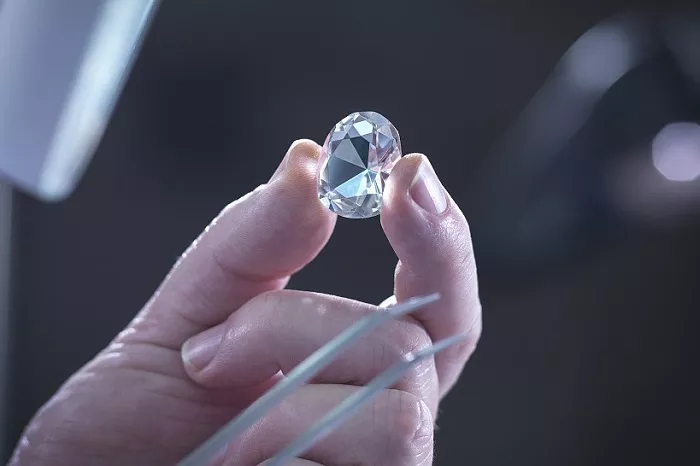SF Diamond has established a lab-grown diamond factory in Henan province, boasting an annual production capacity of about 700,000 carats. This marks it as the largest chemical vapor deposition (CVD) process-based diamond producer in the country.
According to experts, this development signifies a significant breakthrough in Henan’s ultra-hard materials industry. It is expected to further bolster the growth of emerging sectors like electric vehicles. This comes after the successful creation of self-developed microwave plasma CVD (MPCVD) equipment, overcoming previous foreign technology restrictions.
Fang Haijiang, chairman of SF Diamond, emphasized the importance of CVD technology in producing large, high-quality industrial diamonds. He noted that the commissioning of this 700,000-carat project addresses a previous shortfall in the industry.
Sun Zhaoda, secretary-general of the Superhard Material (Industrial Diamond) Association of China (IDAC), highlighted that the establishment of this factory will not only enhance MPCVD equipment manufacturing but also boost the entire diamond production and processing industry chain in the province.
Henan has a longstanding history in ultra-hard materials, with China’s first lab-grown diamond successfully developed in Zhengzhou, its capital, in the 1960s. Over the past six decades, Henan has emerged as a key player in this sector.
China’s lab-grown diamond output dominates the global market, with Henan contributing significantly. Approximately 80 percent of China’s lab-grown diamonds are produced in Henan, according to IDAC.
Diamonds are prized for their exceptional properties, including high chemical inertness, thermal conductivity, low friction coefficient, ultrawide bandgap, and optical transparency. These characteristics make diamonds indispensable in various advanced manufacturing fields.
However, natural diamonds have limitations such as being nonrenewable, costly to mine, and prone to impurities. This makes lab-grown diamonds preferable for industrial applications due to their identical properties to natural diamonds, cost-effectiveness, and accessibility. Experts note their increasing importance in fields like quantum computing, communication, and precision measurement.
Compared to the high-pressure high-temperature (HPHT) method, which is common in Chinese factories, CVD is considered more economical and faster for diamond production. Li Hongli, deputy general manager of SF Diamond’s subsidiary for manufacturing CVD diamonds, explained that it takes about a month and a half to grow a 5-carat diamond in the new factory.
SF Diamond highlighted the popularity of MPCVD for producing electronic-grade diamonds, particularly for use in electronics such as heat sinks, high-frequency devices, and laser diodes. MPCVD is also seen as optimal for diamond semiconductor materials used in high-power electronics, particularly in applications like electric vehicles.
In 2022, the U.S. imposed limits on exports of technologies supporting the production of advanced semiconductors, including diamond-based substrates. This emphasized the importance of self-developed MPCVD technology for China’s ultra-hard materials sector and emerging industries, according to SF Diamond.
SF Diamond has been investing heavily in MPCVD technology research and development, culminating in the successful development and verification of MPCVD equipment. These efforts align with calls by the Henan provincial government to develop ultra-hard materials, particularly lab-grown diamonds.


